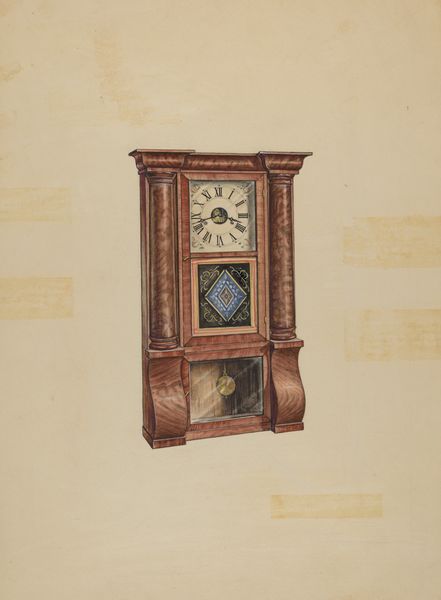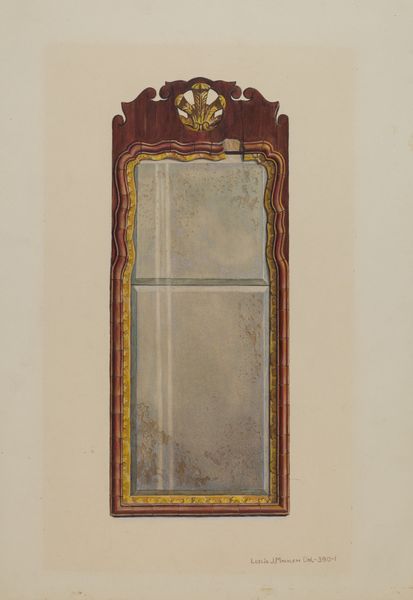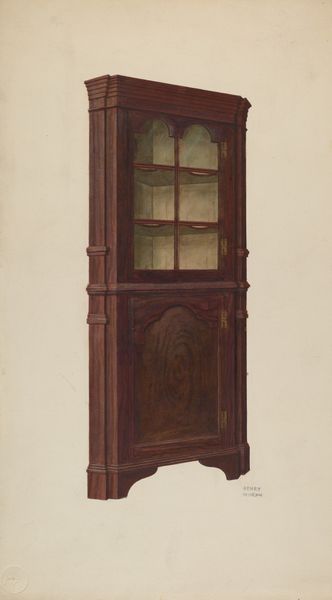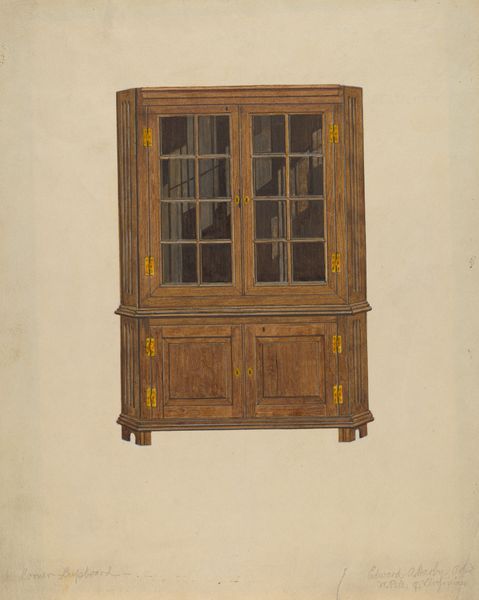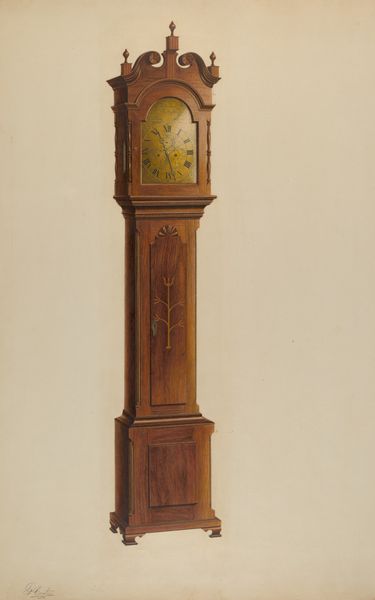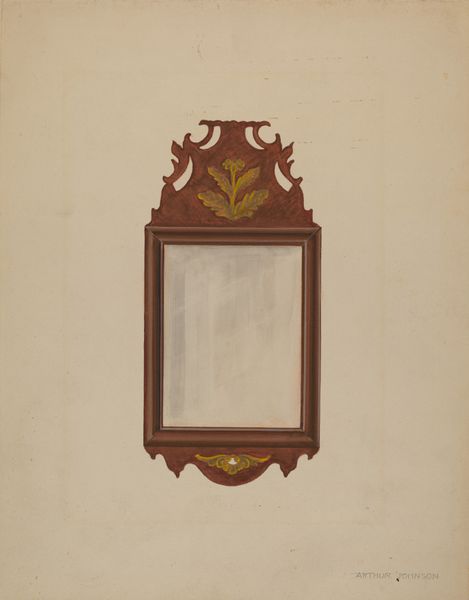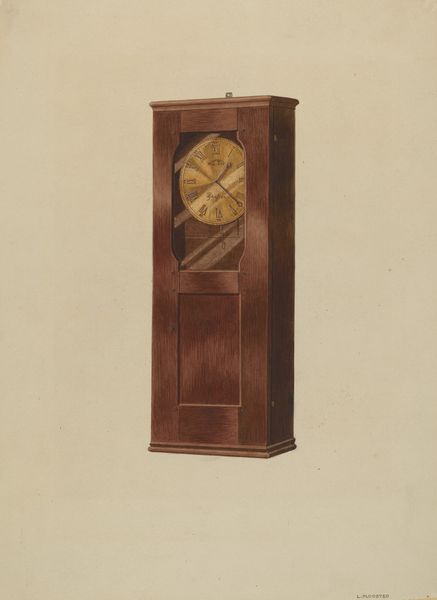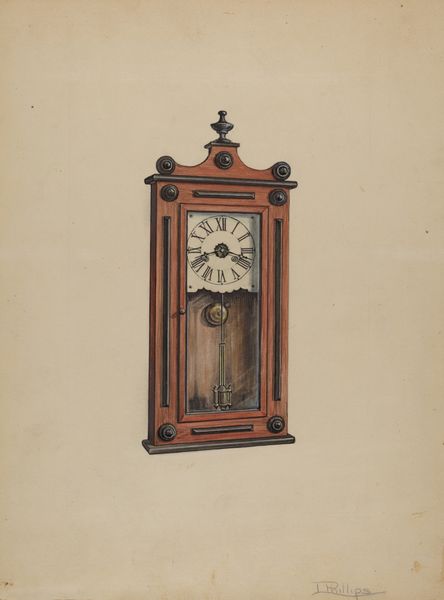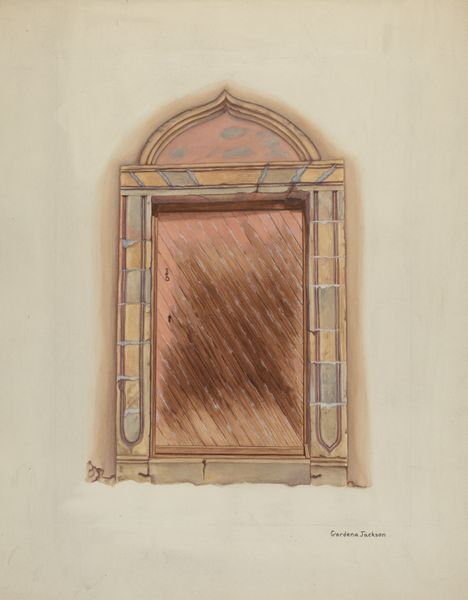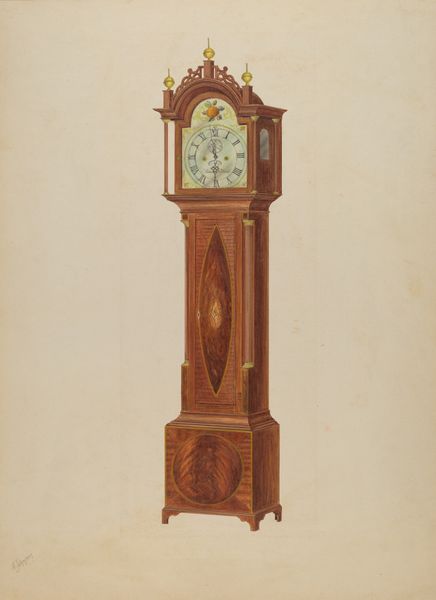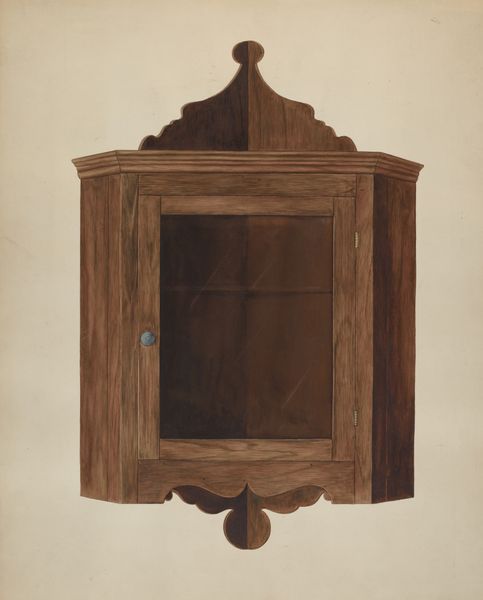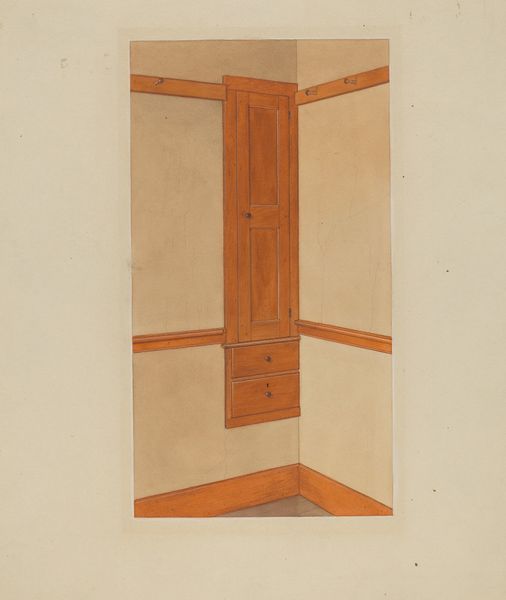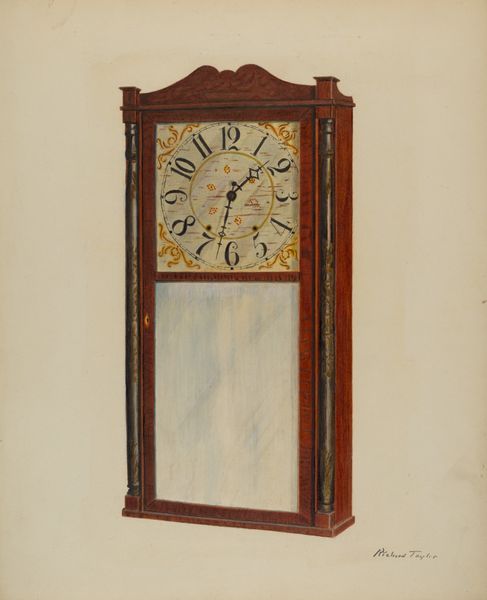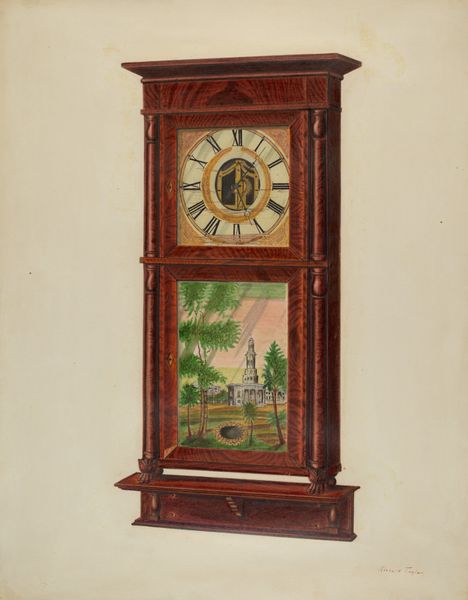
drawing, watercolor
#
drawing
#
water colours
#
oil painting
#
watercolor
#
history-painting
#
academic-art
#
modernism
Dimensions: overall (approximate): 35.4 x 27.9 cm (13 15/16 x 11 in.) Original IAD Object: 40"high; 17"wide
Copyright: National Gallery of Art: CC0 1.0
Editor: Here we have Alvin M. Gully's "Empire Mirror" from 1936, seemingly a watercolor and drawing piece. It’s… peculiar. The rendering of the mirror itself seems almost hazy, while the frame possesses crisp details. How would you approach an interpretation of this work? Curator: Considering its formal elements, I observe a clear emphasis on verticality. The artist uses the elongated rectangular form to guide the viewer's eye upward. Note how the detailed carving on the frame contrasts with the diffused, almost ethereal quality of the mirror's reflection. This deliberate contrast introduces a play between the tangible and intangible, the solid and the ephemeral. What strikes you about that diamond shape? Editor: Well, the ornate crest in the blue diamond does add a layer of visual intrigue, breaking the vertical pull, it almost centers your attention back to the upper portion. Curator: Precisely. It functions as a focal point, interrupting the linear flow and encouraging a closer inspection of its symbolic weight. Observe, too, how the geometric regularity of the diamond contrasts with the more organic forms within. Editor: It's as if the artist wanted us to study the individual elements, contrasting textures and geometric shapes. Curator: It demonstrates an awareness of line, form, texture and contrast as a set of signifying gestures. It would be interesting to explore further why these choices might have been made. Editor: I’m struck by how a seemingly simple object can hold so many layers of artistic intention. It challenges me to look beyond the subject matter and focus on the artist’s conscious choices. Curator: Indeed, a meticulous focus on the artistic decisions within a composition is, in my view, often the path to more meaningful understanding.
Comments
No comments
Be the first to comment and join the conversation on the ultimate creative platform.
